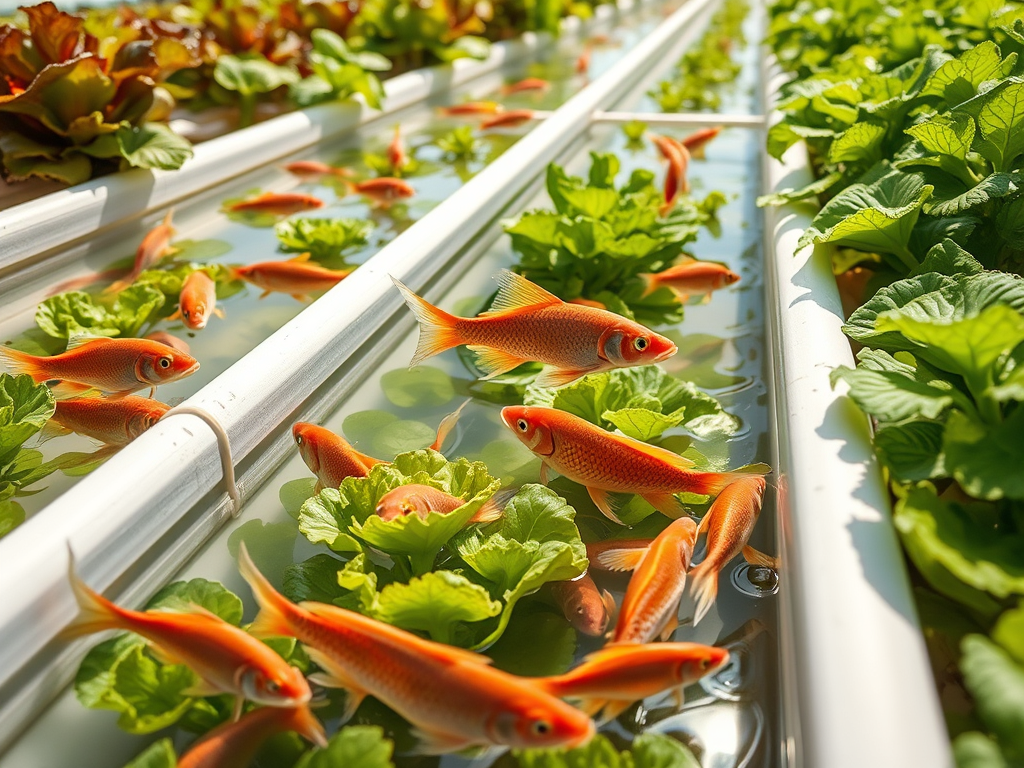Aquaponics is taking root across Africa as an innovative farming method that merges fish farming and vegetable cultivation into a seamless, symbiotic system. At a time when food security, water scarcity, and land constraints are critical challenges, aquaponics offers a sustainable, efficient, and highly profitable solution. This article explores how you can unlock the hidden wealth of aquaponics and transform your farming business into a thriving agribusiness in Africa.
What is Aquaponics?
Aquaponics combines aquaculture (fish farming) and hydroponics (soilless plant farming) into a closed-loop system. Fish excrete waste, which is broken down by beneficial bacteria into nutrients for plants. The plants, in turn, purify the water, creating a self-sustaining environment. This method eliminates chemical fertilizers and reduces water consumption by up to 90%, making it a game-changer in sustainable farming.
Case Studies: Aquaponics in Action
1. GreenWave Farms, Lagos, Nigeria
GreenWave Farms started as a small aquaponics venture in a backyard in Lagos. Within two years, it grew into a commercial business supplying fresh tilapia and organic vegetables to local supermarkets and restaurants. By leveraging social media to market their produce, the farm attracted a loyal customer base. Today, GreenWave Farms earns over ₦4,000,000 annually while utilizing just 100 square meters of land.
2. Kenya’s Aquaponics Revolution
In Nairobi, a group of women entrepreneurs introduced aquaponics in a community project. By growing lettuce, kale, and tilapia, they generated enough income to send their children to school and support other families. Their produce became so popular that they started exporting to neighboring countries, turning a small initiative into a regional success story.
3. Sauti Ya Kilimo, Tanzania
Sauti Ya Kilimo, a social enterprise in Tanzania, trains young graduates to set up aquaponics systems. The initiative has empowered over 200 youth farmers who now grow vegetables and rear fish in urban and peri-urban areas. The project’s participants report average monthly earnings of $500—an impressive income for small-scale farmers in the region.
How to Start an Aquaponics Farm in Africa
1. Select Profitable Fish and Crops
Your choice of fish and plants will depend on market demand and local environmental conditions:
- Fish: Tilapia, catfish, and African cichlids are excellent for their rapid growth and adaptability.
- Plants: High-value crops like lettuce, kale, spinach, tomatoes, and herbs such as basil and mint thrive in aquaponics systems.
2. Design an Efficient System
Start small to reduce initial costs while ensuring system efficiency. Here’s what you’ll need:
- Fish Tank: A medium-sized tank to rear fish; the size will depend on the number of fish.
- Grow Beds: Choose gravel, clay pebbles, or other inert media for plant support.
- Pumps and Filters: Ensure smooth water circulation and filtration to maintain a healthy ecosystem.
- Energy Source: Solar panels are an excellent option for powering your pumps in off-grid areas.
3. Master System Management
Monitor water pH, temperature, and nutrient levels regularly to ensure both fish and plants thrive. Training in aquaponics basics can help you avoid common mistakes.
Maximizing Profit from Aquaponics
Diversify Your Revenue Streams
Aquaponics provides multiple income opportunities:
- Local Sales: Sell fresh fish and vegetables to local markets and supermarkets.
- High-End Clients: Partner with restaurants and hotels that prioritize organic produce.
- Training Services: As your expertise grows, offer aquaponics training to aspiring farmers.
Innovative Ideas for Extra Revenue
- Agri-Tourism: Open your aquaponics farm to tourists and students as an educational site.
- Value Addition: Process fish into fillets or dry vegetables for higher-value products.
Overcoming Common Challenges in Aquaponics
1. High Setup Costs
Many farmers worry about the cost of setting up an aquaponics system. To mitigate this:
- Start small with a basic system and reinvest profits for expansion.
- Seek grants or partnerships with agricultural NGOs focused on sustainable farming.
2. Limited Technical Knowledge
Managing an aquaponics system requires specialized skills. Access online courses, attend local workshops, or partner with experts to fast-track your learning.
3. Market Access Issues
Develop strong branding for your products to stand out. Use social media to reach consumers directly and build a loyal customer base.
Conclusion
Aquaponics is more than a farming technique; it’s a transformative solution that addresses food security, sustainability, and profitability. By integrating fish farming and vegetable production, African farmers can tap into a growing demand for organic produce and fresh fish, all while conserving resources and maximizing profits.
With successful examples from Nigeria, Kenya, and Tanzania, aquaponics is clearly an agricultural model worth investing in. Are you ready to dive in and create your own aquaponics success story? The journey begins with one small system and a big dream.


